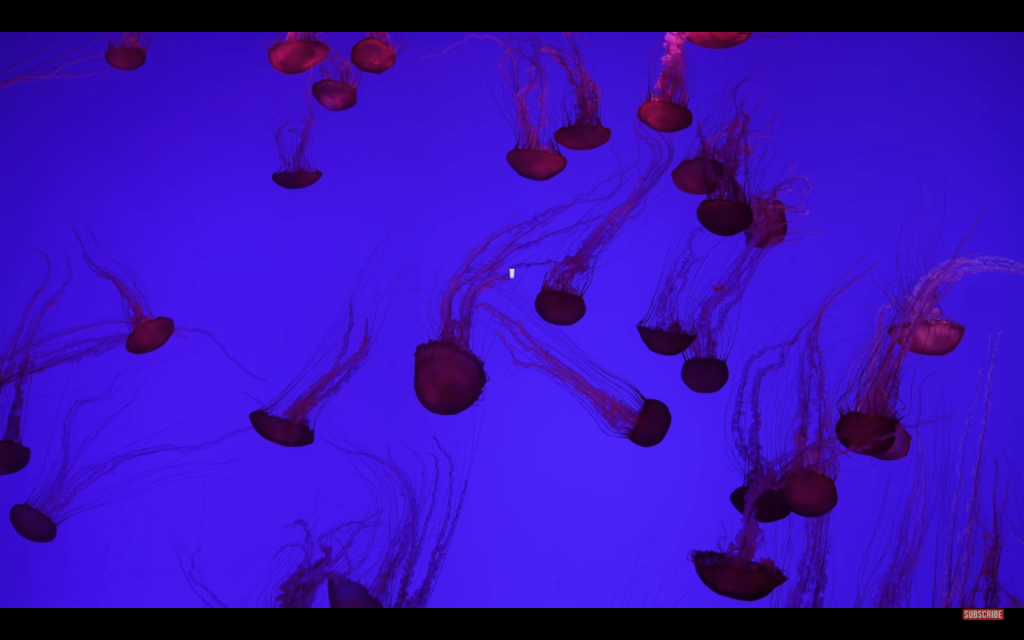The jellyfish from Scyphozoan and Cubozoa is one of the oldest creatures in the world. These living things, which have been flattened and adapted to swimming with umbrella-like structures, are very interesting. Translucent and gelatin-like form, and in some cases, the world’s greatest danger can be transformed into the sea, live in the sea with other creatures.
Jellyfish are more complex structures than polyps. Jellyfish, which can be considered corals or relatives of anemones, are not different from the same species. Body shapes are usually flat and they are easy to swim thanks to their umbrella-shaped organs. The jellyfish, another name of which is, invertebrate; there are also heart, brain, eye, bone, and scales.

With these features, jellyfish are curious about everyone. Considering the structural features of jellyfish; 95 percent of the water, 4 percent of the salt and the remaining 1 percent of the protein is composed of part. The jellyfish are not brains, but the nervous system is well developed. They are very sensitive to light and odor. Because they do not have a hydrodynamic body, their movements are slow. They’re not aggressive. They act by controlling the movements of the discharge and medipir.
Some of them have tentacles around their bodies. Some of them can be whip-like extensions. General structure of the jellyfish; mouth, tentacles, oral arm, trunk, stomach and ovary. The jellyfish is in fact the same family as the hydra and octopuses. It is like a kind of intermediate in the middle of the octopus with a much more complex structure than the hydrants which are simpler than it. Although there is no brain in the jellyfish, the octopus brain is highly developed and has three hearts.
The jellyfish were first studied by scientists in the early 1940s. Prior to this, jellyfish were known, but researchers had not yet had enough knowledge of the life of these interesting marine creatures. They were called indeterminate creatures. Jellyfish continues to survive in nature for 650 million years. It is clear that jellyfish are successful in this struggle even if many species lose their generation over time.
The tentacles and whips of the jellyfish are filled with tiny transparent sachets. In these vesicles, the toxin substance; in other words, there is poison. If we say ın poisonous ‘for many species of jellyfish, it is not wrong. In contact with another creature, sometimes even in cases where the jellyfish is dead, it may be poisonous. In the case of the jellyfish theme, the tentacles shrink and adhere to the skin. At that time the vesicles on the tentacles have not yet been opened. The moment of opening an unopened pouch increases the effect intensity of the toxin. Therefore, in the case of a jellyfish theme, the right thing to do; to prevent the opening of the sachets or withdraw the jellyfish from the contact surface.
The most poisonous jellyfish known is the box jellyfish species. It is not only the jellyfish variety, but also among the most poisonous creatures known all over the world. The can of poison can kill a person in 90 minutes. Tentacles are 60 pieces and length is about 3 meters. Box jellyfish are mostly inhabited in Indian Ocean and Indian Passim. Except this; The Philippines, Vietnam coast, New Guinea and Australia are a common species in Darwin. Box jellyfish is not only water, but also on land. The box jellyfish can neutralize 70 people in one go with billions of toxic capsules. According to jellyfish in other species, box jellyfish can distinguish colors very well. The Zoologist Donald Vernon was able to observe the box jellyfish for the first time on the coast of Austria. According to Vernon’s research, the box jellyfish was found to carry 350 times more poison than a normal jellyfish.
Box jellyfish is the most transparent trap to be invisible. This type of life, which dies at the time of contact with the sun, is a significant risk factor for non-preventive swimmers. The first effect of the box jellyfish on a floating person is a heart attack.
When a jellyfish touches your skin, what you will feel is a burning sensation. This feature of the jellyfish is a reaction to a foreign life or object that touches the body. These marine creatures, which do not tend to be aggressive, are always cautious for their safety. When they perceive it as a threat, they activate their cells called nematocyst. Nematocysts are found in some of the marine organisms; they benefit themselves from protection, hunting or holding.
In jellyfish, these cells, which are activated due to their defense mechanisms, release themselves immediately in contact with another surface and have a burning effect on their surface. According to some studies, nematocysts of many jellyfish can cause very large pain. The nematocysts start to burst and become burner in that process. Although not always, when your jellyfish touches your skin, it can be accompanied by an itch. In addition to skin burning, as well as blushing.
It is always beneficial to be prevented against jellyfish. It is important to remember that they are carnivorous creatures, even though we know that they have no brains. This marine creature has entered the list of the most dangerous animals in the world, and can release dozens of toxins at the same time. It can be as dangerous as the wildest, most powerful and dangerous animals in the world. Some species of jellyfish, thanks to their nematocyst, disrupt their victims completely and show their eating behavior.
In general, they do not have the ability to choose behavior such as victim and hunting. Therefore, direction finding skills have not occurred. They may want to eat every living thing they have. As he progresses through the water, he releases his toxins, ejaculating the living creature, and then eats as soon as it is neutralized. Foods that they usually find in water; larvae are tiny creatures of sea creatures and eggs.
